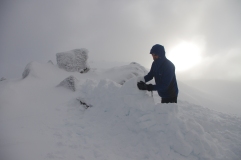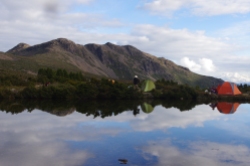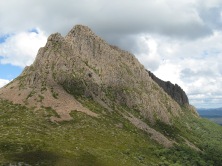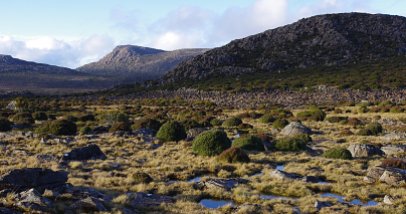I first learnt of Peter through Ngarak Press. His regional histories and materials on indigenous peoples in Gippsland and what we would now call the Frontier Wars changed the way many people look at the occupation of the east of the state. I loved his bookstores in Ensay and Swifts Creek. While now mostly focused on climate change, he continues to be a significant historian for the region, having lifted the lid on the many massacres which happened during and after occupation.
tell me a bit about yourself and what you do
 I am retired and now live in Bairnsdale. My day is mostly spent reading and writing – almost entirely on climate change with the very occasional piece on history. I produce and publish a blog on my website twice a week and have done so for nearly 4 years. These are all on the problem of climate change and its solutions in relation to Gippsland. I am also active on social media tweeting climate change articles and information. The publications page of my website has a range of historical papers – some old but mostly new – on the Kurnai and are available as free downloadable pdfs.
I am retired and now live in Bairnsdale. My day is mostly spent reading and writing – almost entirely on climate change with the very occasional piece on history. I produce and publish a blog on my website twice a week and have done so for nearly 4 years. These are all on the problem of climate change and its solutions in relation to Gippsland. I am also active on social media tweeting climate change articles and information. The publications page of my website has a range of historical papers – some old but mostly new – on the Kurnai and are available as free downloadable pdfs.
why did you move where you live – what drew you to the place?
Along with close friends I made my first attempt to climb Mt Bogong during Easter 1965. The trip was aborted due to a heavy early fall of snow for which we were inadequately equipped. I then joined the Monash University Bushwalking Club and was active with them for the rest of the decade as a walker and canoeist culminating in a 30 day trip in south-west Tassie in February 1969. After marriage, an overseas sojourn, teacher training and the birth of my daughter I applied for a range of secondary schools on or adjacent to the mountains and was appointed to Swifts Creek in 1973. There we remained for the next 40 years.
do you have a favourite place?
Originally Mt Feathertop, then Moscow Villa on Bentleys Plain. Now the pleasant walks along the Mitchell River. I am also in the Bairnsdale Library most days of the week.
what do you see as your life’s work
An emphasis on local history and non-violence led to my work on the Kurnai tribes and to adopt a libertarian near pacifist philosophy. In the 1980s I wrote my Kurnai trilogy – Gippsland Massacres (1983) Through Foreign Eyes and Our Founding Murdering Father (both 1988). When I had difficulties getting publishers I started Ngarak Press – mainly to publish and republish my own works. To get the business into the black I also published a series of place name booklets on Gippsland, somewhat formulaic with origins, Aboriginal names and meanings, some potted history.
The best of these has been The Names on the Great Alpine Road between Bairnsdale and Omeo which sold 8,000 copies and Ngarak eventually published about 25 titles – the last in 2004. To provide further income I also dealt in secondhand books mail-order, online and had a series of shops in Ensay and Swifts Creek between 1994 and 2010. From 1996 to 2006 I wrote a monthly column for the Libertarian Workers for a Self-managed Society which were first published in The Anarchist Age and then later online. These were part history, part political and economic commentary, the occasional book review and the last numbers were dominated by the Iraq War. Of these some have dated badly and most are difficult to find. Following the commencement of the war I also published a monthly “Irregular Gippsland Peace Newsletter” which went for over 50 issues. The minimum summer Arctic ice sheet of 2007/8 was an eye opener convincing me that global warming was the preeminent issue facing mankind and since then I have concentrated on climate change – at first by my candidacy in various elections and more recently through my blog and the social media. I was for a short time the Secretary of the now defunct Renewable Energy Party.
what influences have had the greatest impact on you as a person
A series of friends mostly but not all Monash bushwalkers, events such as the Vietnam war and conscription, French nuclear testing in the Pacific and literary spirits such as Bertrand Russell, George Orwell and Henry Thoreau.
what gives you most joy?
A long list including family, dinner with friends, a daily walk along the river, viewing a special bird in the garden and taking my wife a cup of tea in the morning.
who are the people you most admire
A short list including pollie and historian Barry Jones, Climate scientists James Hansen, Barrie Pittock, Tim Flannery.
what gives you hope
The renewable energy revolution, the predictions of Tony Seba, the work of organizations like Beyond Zero Emissions and the Alternative Technology Association and the efforts of climate activists around the globe.
whereabouts on the optimist – pessimist spectrum do you put yourself when it comes to the future of our society and planet?
On the whole I am a pessimist and think that the problems of global warming and the population explosion when considered together are overwhelming and the Club of Rome population forecasts – a severe crash in the human population between 2050 and 2100 – foreboding. I hope they are wrong. I prefer the homily of English divine Thomas Norton as a guide when he said something along the lines of “hope for the best and prepare for the worst”.
blog: http://petergardner.info/
email: pdgardner2012@gmail.com
twitter: https://twitter.com/peterdgardner























































Recent Comments